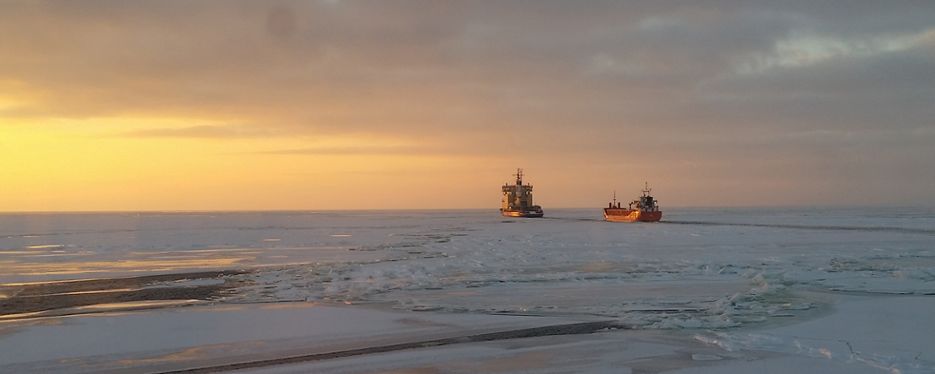Sea ice is of great significance to shipping. During harsh winters, it can also affect other infrastructure such as bridges, passenger ferries and coastal communities. Ice often makes emergency actions such as coast guard rescues and clearing oil spills more difficult. The sea ice plays an important role in the Baltic Sea’s ecosystem.
The annual ice period in each year has become shorter since the turn of the twentieth century. The number of days of ice in different parts of the Baltic Sea area has fallen by between 14 and 44 days. The greatest change has been observed in the south.
When it comes to the maximum sea-ice extent a downward trend of 10 percent per decade is seen in the longer historical records, sea-ice thickness on the other side, shows no clear downward trends.
The sea ice will be affected dramatically during the next hundred years. The clearest changes are that the duration of the ice winter will become shorter, and that the geographic extent of the ice is reducing. These changes are greatest in the south, while the Bothnian Bay and the Bothnian Sea are affected the least. However, there is nothing to suggest that the sea ice will disappear completely from the Baltic Sea region this century. Since the variations from year to year will also be great in the future, there may be harsh ice winters, even if these are fewer in number.
Ice on lakes
Generallt, large lakes freeze over later than small lakes because they cool down more slowly during the autumn and are more exposed to wind. At lakes where long-term observations of freezing over and thawing have been carried out, a tendency to freeze over later and thaw earlier can be seen.
In the future, the period with ice cover on lakes is expected to become even shorter. The number of ice-free years will also increase. Studies of Sweden’s large lakes – Vänern, Vättern, Mälaren and Hjälmaren – suggest that the number of days with ice on the lakes may reduce by an average of between 20 and 60 days each year between now and 2100. The number of days with ice is reducing the most for Mälaren, followed by Hjälmaren. Vättern has the least reduction.
